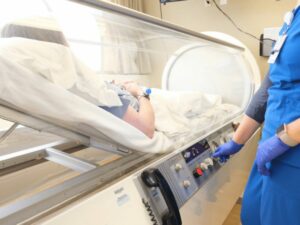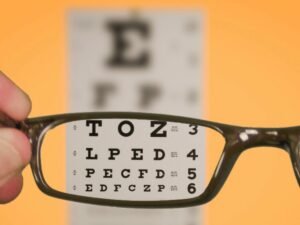What is the optimal frequency for hyperbaric oxygen therapy? This question commonly arises among businesses in the health sector. While the efficacy of the treatment is well-established, determining the ideal frequency for optimal results can prove challenging.
The frequency of HBOT is not arbitrary. It requires a deeper understanding of various factors including patient conditions, therapy goals, and practical logistics. In this guide, we will lay bare these considerations, casting light on the mystery shrouding HBOT frequency.
Embark on this journey, let’s delve deeper and read on!
1. Understanding Hyperbaric Oxygen Therapy Session Duration
Hyperbaric oxygen therapy (HBOT) is a revolutionary medical treatment with varying session durations. Often, these sessions last anywhere from 60 to 120 minutes, depending on the condition being treated. However, the duration alone doesn’t tell the full story of HBOT’s efficacy. I believe in essence, the success of therapy lies in a precise balance of session duration and frequency.
Here are some advantages:
- Optimized Resource Allocation: When session durations are understood and managed effectively, it can optimize resource use. Accurate scheduling allows healthcare businesses to maximize the use of their hyperbaric chambers and staff, leading to improved operational efficiency.
- Increased Treatment Compliance: Tailoring session durations to fit the patient’s lifestyle and convenience can improve adherence to the treatment plan. When businesses take into consideration the comfort and convenience of the patient, the result could be improved patient satisfaction and higher treatment compliance rates.
- Robust Financial Planning: Knowledge of session lengths can aid in robust financial planning. It enables accurate cost estimations and assists in negotiating more effectively with insurance providers. Also, partnerships with manufacturers like OxygenArk may provide equipment solutions that align with these calculated treatment durations.
- Enhanced Patient Safety: Understanding the duration of hyperbaric oxygen therapy sessions is critical for patient safety. Overlong sessions could potentially result in side effects. Therefore, knowledge about the optimal session length is key to ensuring safe and effective treatment.
- Improved Patient Outcomes: A deep understanding of hyperbaric oxygen therapy session durations can lead to better patient outcomes. Proper session length can ensure optimal oxygen saturation in the body, leading to quicker healing and recovery. It’s a balancing act that healthcare providers need to master to deliver the best possible care.
2. Importance of Correct Frequency in Hyperbaric Oxygen Therapy
Establishing the correct frequency in HBOT is akin to finding the rhythm in a melody. It’s crucial, impactful, and can significantly influence the overall effectiveness of the treatment plan. Here are some important details to keep in mind:
- Balancing HBOT Frequency for Optimal Results
Understanding the right balance between session length and frequency forms the bedrock of effective HBOT. Too much or too little of either could result in suboptimal outcomes. It’s like baking; the perfect cake needs just the right balance of ingredients and baking time. On the other hand, healthcare businesses need to find the right HBOT rhythm for optimal patient care.
- Therapy Frequency for Patient Needs
Each patient is unique, and so are their needs. A one-size-fits-all approach to HBOT frequency is far from effective. Personalizing treatment schedules can better address individual health concerns. From my perspective, it’s like tailoring a suit; it has to fit the individual perfectly. Firms can trust a brand that provides hyperbaric chamber customization options that fit every patient’s needs.
When scheduling HBOT, multiple factors need consideration. These include the severity of the patient’s condition, their overall health, and their response to therapy. These aspects can guide the determination of optimal frequency.
- Effective HBOT Frequency Management
A renowned brand for manufacturing state-of-the-art hyperbaric chambers is helpful. These chambers support healthcare businesses in delivering personalized, high-frequency HBOT, contributing to superior patient outcomes. We are the reliable partners that firms need when diving into the world of HBOT. A consideration to invest in our chambers will indeed prove to be a wise decision.
- Promoting Consistent Oxygen Saturation
By ensuring a steady supply of oxygen to damaged tissues, healthcare businesses can significantly enhance the healing process. Regular, well-spaced sessions facilitate this consistent saturation, helping the body to rebuild at the cellular level. This methodology can potentially reduce recovery time and improve overall patient outcomes.
- Improving Patient Compliance
A crucial aspect often overlooked is the patient’s adherence to the therapy schedule. A well-planned HBOT routine that takes into account not only the medical needs but also the patient’s lifestyle and convenience, can significantly improve compliance rates. This level of patient-centric planning by healthcare businesses could result in enhanced therapy effectiveness and increased patient satisfaction.
3. Recommended Frequency of HBOT for Different Conditions
Diverse health conditions may warrant the use of Hyperbaric Oxygen Therapy (HBOT). However, understanding the recommended frequency of HBOT for these diverse conditions is crucial for optimal patient care. It’s essential to remember the following:
Decompression Sickness
Decompression sickness is a condition often seen in divers, necessitating the appropriate use of HBOT. Typically, daily sessions until symptom resolution is a common approach. This protocol enhances the elimination of inert gases, allowing faster recovery. I have seen several cases and I can attest that proper management of session frequency can make a world of difference.

Chronic Wounds and Diabetic Foot Ulcers
HBOT can significantly improve the healing rate of chronic wounds and diabetic foot ulcers. It usually involves daily sessions over a few weeks. This frequency optimizes oxygen delivery to the affected tissues, promoting healing. It’s essential to monitor progress regularly to adjust the frequency as needed.

Radiation Injury
For radiation injuries, HBOT has proven to be a highly effective treatment. Treatment plans typically involve daily sessions over six to eight weeks. Adjustments might be needed depending on the patient’s progress and response to therapy. From experience, patience and regular monitoring are the keys to success here.

Carbon Monoxide Poisoning
Carbon monoxide poisoning is a critical condition where HBOT can be a lifesaver. Immediate and possibly repeated treatments within the first 24 hours can be critical to counteract the effects of poisoning. Remember, in such cases, time is of the essence.

Other Conditions
HBOT is versatile, extending its hyperbaric chamber benefits to various other health conditions. The frequency of these conditions can vary widely, requiring a case-by-case approach. Healthcare businesses can consult the latest research and guidelines to determine the best course of action.

4. Potential Risks and Side Effects of Frequent HBOT
Like any medical treatment, HBOT carries potential risks and side effects. Understanding these is vital for healthcare businesses to ensure safe and effective patient care. Take these important details into consideration:
Ear and sinus injuries can occur due to the pressure changes during HBOT. Patients may experience ear pain, sinus discomfort, or even barotrauma. Awareness and appropriate measures can mitigate these risks significantly.

Oxygen toxicity is a risk with frequent and prolonged exposure to high concentrations of oxygen. This condition can affect the lungs and central nervous system, causing various symptoms. Careful session planning and vigilant monitoring are the best defenses against this risk.

Temporary changes in vision can occur following repeated HBOT sessions. Patients might experience myopia, which typically resolves after therapy completion. Regular eye check-ups can help monitor and manage this side effect effectively.

In rare cases, frequent HBOT can result in seizures due to oxygen toxicity. Although these are generally self-limiting and non-harmful, they can be alarming. In my years in this industry, ensuring proper communication with patients about such possibilities has always been beneficial.

- Considerations for Risk Management
Firms must look for reliable hyperbaric chambers to mitigate these risks. Their state-of-the-art chambers are designed with safety in mind, allowing businesses to offer high-frequency HBOT with minimized risks. I believe OxygenArk is like the trusted safety gear in the journey of HBOT. Considering checking out our hyperbaric chamber can indeed contribute to safer and more effective patient care.

5. 6 Factors Determining the Frequency of Hyperbaric Oxygen Therapy
Several factors come into play when determining the frequency of Hyperbaric Oxygen Therapy (HBOT). Grasping these can enhance the effectiveness of the therapy and significantly improve patient outcomes. Here are some key points to keep at the forefront:
#1 Patient’s Specific Health Condition
The patient’s specific health condition is a critical determinant of HBOT frequency. Some conditions may necessitate daily sessions, while others may require less frequent treatment. It’s essential to refer to up-to-date clinical guidelines and research when planning therapy. I’ve always considered this factor as the base foundation for establishing an effective HBOT schedule.
#2 The Severity and Stage of the Condition
The severity and stage of the patient’s condition can greatly influence HBOT frequency. Acute conditions or severe cases may demand more frequent sessions compared to chronic conditions or early-stage cases. This dynamic approach allows for more targeted and effective treatment.
#3 Patient’s Overall Health Status and Age
The patient’s overall health status and age can impact HBOT frequency. For example, elderly patients or those with multiple health conditions may require a different frequency approach than younger, healthier individuals. In my experience, tailoring frequency to these factors often results in better therapy acceptance and improved outcomes.
#4 The Goal of Therapy
The goal of therapy also plays a role in determining HBOT frequency. For example, the frequency can vary whether the goal is to speed up wound healing, treat decompression sickness, or manage a chronic condition. It’s crucial to align the therapy frequency with the desired outcome for optimal results.
#5 Type of Hyperbaric Chamber
The kind of hyperbaric chamber can influence the frequency of sessions. Monoplace chambers designed for a single patient might offer more flexibility in scheduling than multiplace chambers, which are designed for multiple patients and may require more coordinated schedules.
| Hyperbaric Chamber Types |
Frequency of Sessions |
| Monoplace Chambers |
Typically 1 session per day. |
|
May be scheduled over several weeks for specific conditions. |
| Multiplace Chambers |
Can accommodate multiple patients at once. |
|
Sessions may be scheduled 1-2 times per day. |
| Portable Chambers |
Used for individual or home-based treatments. |
|
Frequency may vary based on the treatment plan. |
#6 Availability of Medical Personnel
The availability of trained medical professionals to monitor and conduct the sessions also plays a significant role. The number of sessions may need to be adjusted based on staff availability, emphasizing the need for a well-coordinated and adequately staffed medical team.
6. Practical Considerations When Scheduling HBOT Sessions
When scheduling HBOT sessions, practical considerations are just as vital as clinical ones. Proper planning can ensure efficient treatment delivery and higher patient satisfaction. Here are the vital aspects to remember:
- Availability of HBOT Facilities
The availability of HBOT facilities can impact session scheduling. Not all medical establishments have HBOT facilities, and availability can vary. Businesses must work within these constraints to offer timely and regular treatments.
- Patient’s Schedule and Lifestyle
The patient’s schedule and lifestyle need to be factored into HBOT scheduling. It’s essential to strive for a balance that accommodates the patient’s daily routines and therapy needs. As a professional, I’ve found that considering a patient’s lifestyle promotes better adherence to the treatment plan.
- Cost and Reimbursement Considerations
Cost and reimbursement considerations can also affect HBOT scheduling. These financial factors need careful consideration to ensure that the therapy remains accessible and affordable for the patient. Healthcare businesses need to navigate insurance policies and determine the coverage extent, thus directly influencing HBOT frequency.
- Logistics and Staffing at the Healthcare Facility
Logistics and staffing at the healthcare facility play a role in scheduling HBOT sessions. It’s crucial to coordinate with the medical team and ensure sufficient staff is available to administer the therapy safely and efficiently.
- Reliability and Quality of HBOT Chambers
Reliable and high-quality HBOT chambers like those from trusted brands can streamline HBOT scheduling. These chambers deliver consistent performance, allowing healthcare businesses to schedule sessions with confidence. Having reliable technology can be likened to having a dependable partner in the journey of providing HBOT. It’s worth considering renowned brands when planning to invest in hyperbaric chambers.
7. The Future of HBOT: Emerging Research and Applications
Research into HBOT continues to expand, with ongoing investigations into its potential applications. Scientists are exploring its effectiveness in treating other neurological conditions, such as Alzheimer’s disease and post-traumatic stress disorder (PTSD). Moreover, ongoing studies are exploring HBOT’s role in regenerative medicine, including tissue engineering and organ transplantation.
Dive Deeper Into Our Resources
Looking for more diverse product options? Browse through our handpicked selections:
For some insightful reads, we’ve curated a list of recommended articles just for you:
Still haven’t found what you’re looking for? Don’t hesitate to contact us. We’re available around the clock to assist you.
Conclusion
Unlocking the full potential of Hyperbaric Oxygen Therapy is a journey of understanding that we’ve embarked on together in this comprehensive guide. Unveiling the frequency of HBOT and the intricacies involved has laid the foundation to empower healthcare businesses in providing exceptional care.
Ready to amplify the impact of HBOT on patient care or enterprise, perhaps? Considering the importance of reliable and high-quality hyperbaric chambers, OxygenArk stands as a worthy ally. Our robust chambers can elevate the effectiveness of HBOT sessions, a benefit that healthcare establishments should consider. For further clarifications or questions, we are more than ready to assist. Contact us today!










